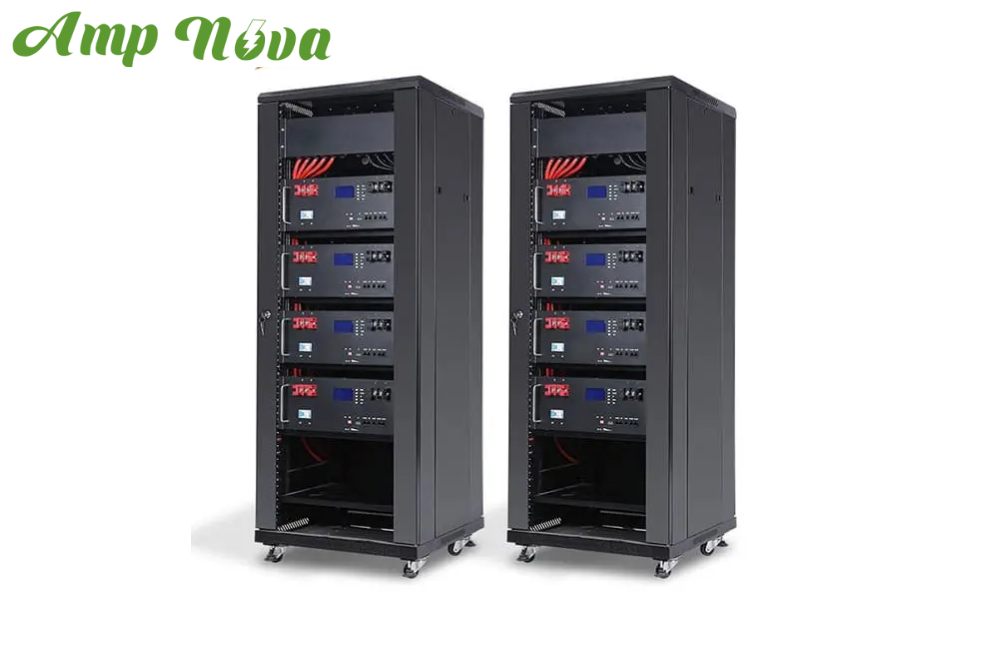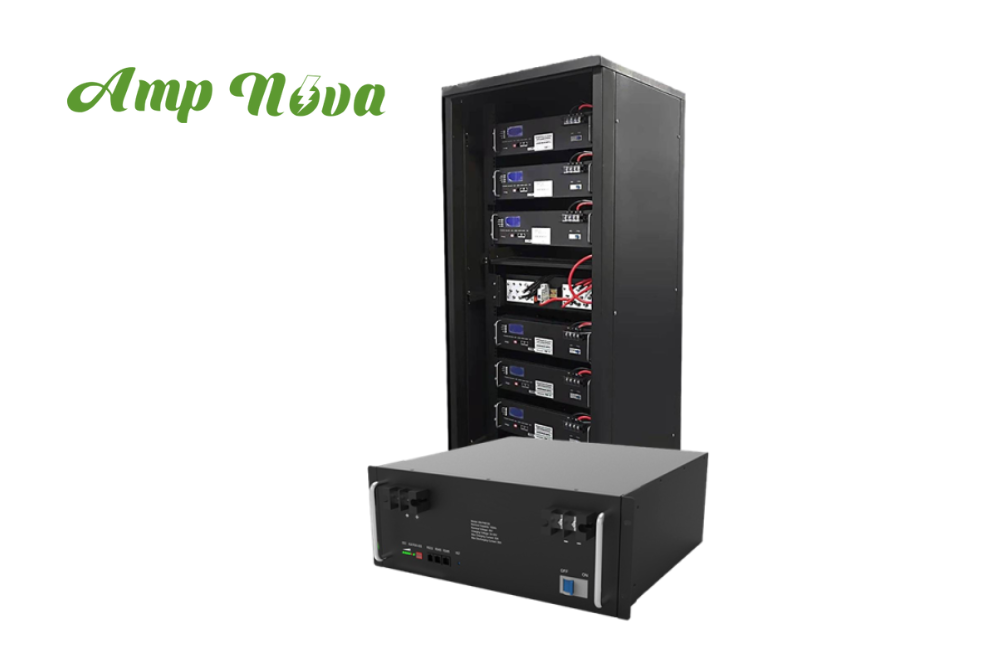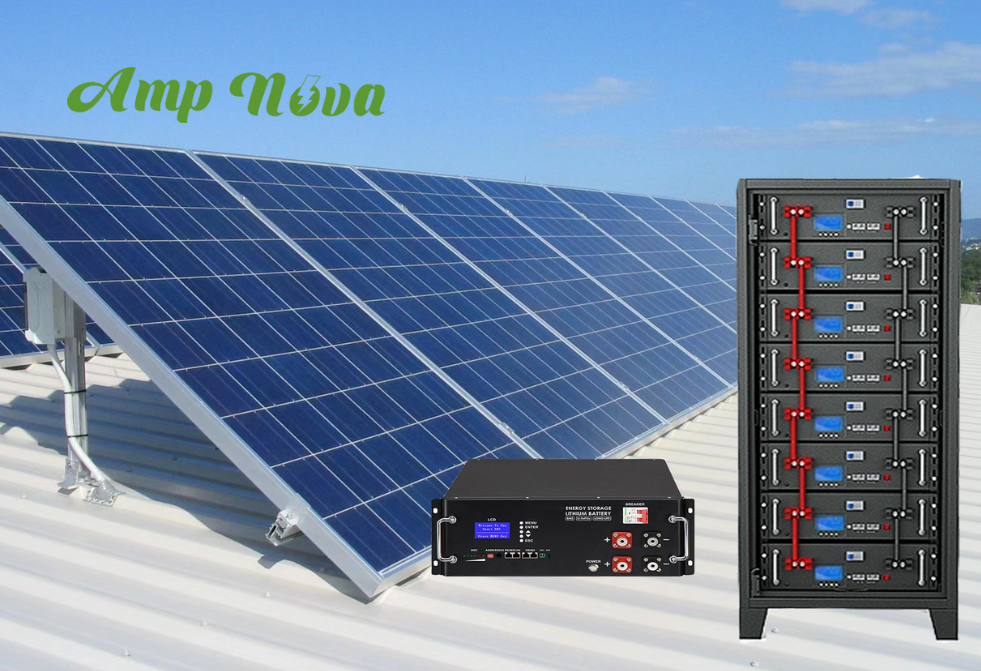- Understanding the Role of Batteries in Server Racks
- Different Types of Server Rack Batteries
- Technical Specifications and Requirements for Server Rack Batteries
- Best Practices for Installation and Maintenance of Server Rack Batteries
- The Economic Impact of Power Outages on Businesses
- Comparative Analysis: Traditional UPS vs. Server Rack Battery Solutions
- Innovations in Server Rack Battery Technology and Energy Efficiency
- Battery Monitoring and Management Systems for Enhanced Reliability
- Case Studies: Real-World Applications of Server Rack Batteries
- Navigating the Regulatory Landscape for Power Solutions in Data Centers
- Future Trends in Server Rack Power Solutions and Battery Technology
In the data-driven economy, Server Rack Batteries are the backbone of many businesses, housing the critical servers that store and process information. These servers operate round the clock; hence, consistent power supply is vital to ensure uninterrupted service. This is where server rack batteries and power continuity solutions come into the picture, safeguarding against power outages and fluctuations that can lead to data loss or downtime.

Server rack batteries, often referred to as Uninterruptible Power Supplies (UPS), are designed to provide backup power instantly when the main power source fails or drops to an unacceptable voltage level. A UPS allows for safe shutdown procedures or keeps equipment running until generators take over or power is restored. There are, principally, three types of UPS systems:
- Standby UPS: Activates only when power loss is detected.
- Line-Interactive UPS: Regulates minor power fluctuations without switching to battery.
- Double-Conversion (Online) UPS: Continuously provides power from the battery while the main power runs the battery charger.
Ensuring power continuity is not merely about having backup batteries. It involves strategic planning and deployment of power management systems that can include:
- Redundant power paths: Ensuring multiple power sources to reduce the risk of a single point of failure.
- Remote power monitoring: Keeping track of power usage and battery health to anticipate failures before they occur.
- Scalability: Anticipating future growth and the need for additional power resources.
For businesses that operate 24/7 or handle critical data, the implementation of effective server rack batteries and power continuity plans is not an option—it’s an imperative. Without it, they risk the high costs of downtime, both financially and in terms of their reputation.
Contents
- 1 Understanding the Role of Server Rack Batteries
- 2 Different Types of Server Rack Batteries
- 3 Technical Specifications and Requirements for Server Rack Batteries
- 4 Best Practices for Installation and Maintenance of Server Rack Batteries
- 5 The Economic Impact of Power Outages on Businesses
- 6 Comparative Analysis: Traditional UPS vs. Server Rack Battery Solutions
- 7 Innovations in Server Rack Battery Technology and Energy Efficiency
- 8 Battery Monitoring and Management Systems for Enhanced Reliability
- 9 Case Studies: Real-World Applications of Server Rack Batteries
- 10 Navigating the Regulatory Landscape for Power Solutions in Data Centers
- 11 Future Trends in Server Rack Power Solutions and Battery Technology
- 12 Employ the Best In-Class Server Rack Batteries for Your Business
Understanding the Role of Server Rack Batteries

Server Rack Batteries serve a critical purpose: they ensure the continuity of power, protecting servers against power interruptions. These specialized batteries, often referred to as Uninterruptible Power Supplies (UPS), provide backup power that enables servers to remain operational during short-term power outages or until a standby power source, such as a generator, comes online.
- Energy Storage: Batteries act as reservoirs of energy. When the main power supply is functioning normally, batteries charge, storing electrical energy for future use.
- Power Regulation: They also contribute to power quality by regulating the voltage and frequency of electrical supply to the servers. This function is vital since servers require a steady and clean power supply to function correctly without risk of data loss or hardware damage.
- Emergency Power: During an outage, the UPS instantaneously switches to battery power, ensuring there is no interruption in service. The swift transition is pivotal for maintaining the integrity and availability of digital resources.
The capacity and type of batteries used can vary depending on the size and power requirements of the server rack. There are a number of different battery technologies employed in server rack UPS systems, with lead-acid and lithium-ion being among the most common due to their energy density and reliability.
Maintaining server rack batteries is also crucial for their effective operation. Regular checks and replacements are necessary to ensure they are always in peak condition. Without the reliability provided by these batteries, server racks would be vulnerable to the smallest of electrical disturbances, which could lead to substantial operational disruptions and potentially significant financial losses for businesses.
Different Types of Server Rack Batteries
Server rack batteries form an essential part of any data center’s power backup strategy. Each battery type offers distinct advantages suited to varying power demands and backup requirements.
Valve Regulated Lead Acid (VRLA) Batteries
These batteries are known for being low-maintenance since they do not require the addition of water to the cells. VRLA batteries include two types:
- Absorbent Glass Mat (AGM): These have fiberglass mat separators soaked in electrolyte between the battery plates, which provide excellent power density and are less prone to leakage.
- Gel Cell: These contain a semi-solid electrolyte that reduces the risk of spillage and provides good performance in wide temperature ranges.
Lithium-Ion Batteries
Lithium-ion batteries are gaining popularity due to their energy density, longer lifespan, and smaller footprint compared to their lead-acid counterparts. They exhibit higher efficiencies and the ability to handle a greater number of charge/discharge cycles.
Nickel-Cadmium (NiCd) Batteries
NiCd batteries are known for their robust performance in extreme temperatures and have a high discharge rate, making them suitable for high-power demand scenarios. However, they are heavier and often more expensive than other battery types, with environmental concerns due to the cadmium content.
Nickel-Metal Hydride (NiMH) Batteries
These batteries tend to have a higher energy density than NiCd batteries and are more environmentally friendly. NiMH batteries are suitable for applications requiring intermediate power density and lifespan.
Flywheel Energy Storage Systems
Though not a traditional battery, flywheel systems store kinetic energy and provide instant power during outages. They are beneficial for short-duration, high-power applications and offer a clean energy alternative with virtually no charge/discharge cycle limit.
Each battery type comes with specific characteristics that align with various power continuity plans. Selecting the right server rack battery is crucial to ensure uninterrupted operations and protect against potential data losses.
Technical Specifications and Requirements for Server Rack Batteries
Server rack batteries are critical components in ensuring uninterrupted power supply systems (UPS) function optimally, thus safeguarding data and hardware during power outages. When selecting batteries for server racks, various technical specifications and requirements must be considered:
- Voltage and Capacity: Server rack batteries typically come in standard voltages, such as 12V or 48V. The capacity, measured in ampere-hours (Ah), should match the energy requirements of the server load and expected runtime.
- Battery Chemistry: The most common types are Valve-Regulated Lead-Acid (VRLA), including AGM and Gel, and Lithium-Ion (Li-ion). Each chemistry has its benefits and considerations, with Li-ion being more lightweight, offering higher energy density and longer lifespan.
- Size and Rack Compatibility: The physical size of batteries should fit within the server racks without impeding airflow or accessibility. Compatibility with rack dimensions and mounting mechanisms is essential.
- Temperature Range: Batteries should be rated to operate within the data center’s ambient temperature range. Excessive heat or cold can significantly reduce battery life and performance.
- Expected Lifecycle: Manufacturers typically indicate the expected number of charge-discharge cycles and overall years of service. It’s critical to align this with the expected replacement intervals.
- Monitoring Capabilities: Modern batteries often include monitoring features for voltage, current, temperature, and remaining life which can be integrated into UPS management systems.
- Certifications: Batteries should comply with applicable standards such as UL, CE, and RoHS to ensure safety and reliability.
- Manufacturer’s Warranty: The inclusion of a warranty offers peace of mind and protection against premature failure or defects.
Considering these specifications and requirements will ensure that the selected server rack batteries provide reliable backup power, maintaining the availability and integrity of critical IT systems.
Best Practices for Installation and Maintenance of Server Rack Batteries
Installing and maintaining server rack batteries is crucial to ensure consistent power supply and to extend the lifespan of the batteries. Following industry best practices enhances safety, reliability, and overall system performance.

Installation Best Practices
- Follow Manufacturer’s Guidelines: Always refer to the battery manufacturer’s installation manual for specific instructions regarding handling, installation, and initial charging procedures.
- Inspect Upon Arrival: Check for any damage that may have occurred during shipping. Report any defects immediately to the supplier.
- Use Proper Tools and Equipment: Employ appropriate tools and safety equipment when installing batteries to prevent injury and ensure a secure installation.
Maintenance Best Practices
- Regular Inspections: Schedule routine inspections to check for corrosion, loose connections, and any signs of wear and tear. Make sure to document these inspections.
- Keep Batteries Clean: Ensure that the batteries and their connections are kept clean and free of debris to prevent shorts or fires.
- Environment Control: Maintain optimal environmental conditions in the server room, such as controlled temperature and humidity levels, to prevent premature battery degradation.
Testing and Monitoring
- Conduct Load Testing: Regularly perform load testing to assess the battery’s ability to perform as expected during power outages.
- Implement Remote Monitoring: Use a Battery Monitoring System (BMS) for continuous performance tracking and to receive alerts for any potential issues.
End-of-Life Management
- Proper Disposal: Comply with regional regulations on battery disposal. Recycle when possible, following the correct procedures for hazardous waste management.
- Replacement Planning: Always plan for battery replacement well in advance of the end-of-life date to avoid unexpected power supply disruptions.
By adhering to these best practices, companies can ensure that their server rack batteries are installed correctly and maintained effectively, leading to a more reliable and efficient power backup system.
The Economic Impact of Power Outages on Businesses
Power outages represent a silent but significant threat to economic activity, especially for businesses dependent on continuous power for operations. Without an uninterruptible power supply, companies face a cascade of negative consequences that can lead to substantial financial losses.
- Direct Costs: When power goes out, production lines may halt, data can be lost, and sales opportunities may be missed. These disruptions result in direct revenue losses. For some industries like manufacturing or data centers, the cost of an outage can reach thousands, if not millions, of dollars per minute.
- Recovery Expenses: Following an outage, businesses incur costs associated with system restarts, equipment checks, and data recovery. These tasks are not only time-consuming but also require additional labor and sometimes third-party services.
- Damaged Equipment: Sudden power cuts or surges can physically damage sensitive electronic equipment, leading to repair or replacement costs. In some cases, insurance may not cover all the expenses related to power-related damage.
- Reputational Harm: Customers expect reliability and when power issues compromise that, trust is eroded. This reputational damage can be hard to quantify but long-term impacts on customer loyalty and brand image could potentially surpass the immediate financial losses.
- Lost Productivity: Employees cannot perform their tasks during an outage, which results in lost labor hours. This lost productivity adds to the economic toll on the business.
To mitigate these impacts, businesses invest in backup power solutions like server rack batteries. These systems ensure continuity of operations, helping to prevent the substantial economic losses associated with power outages. Investing in reliable power backup infrastructure is not only a protective measure but also a strategic decision that helps safeguard the financial stability and resilience of businesses in an unpredictable energy landscape.
Comparative Analysis: Traditional UPS vs. Server Rack Battery Solutions
When discussing the resilience of data centers and server rooms, the comparison between traditional Uninterruptable Power Supply (UPS) systems and server rack battery solutions is pivotal.
Traditional UPS systems:
- Centralized Resilience: Traditional UPS systems are typically centralized, providing backup power to multiple devices or an entire facility.
- Footprint: They often have a significant physical footprint, requiring dedicated space for installation.
- Scalability: Scaling these systems can be complex and expensive, as it usually entails upgrading the existing centralized unit or adding more modules.
- Maintenance: They may require routine maintenance and battery replacement, which can lead to downtime if not managed correctly.
- Energy Efficiency: Older models may be less energy-efficient, resulting in higher operational costs.
Server rack battery solutions:
- Decentralized Protection: These are integrated directly into server racks, offering a localized approach to power backup for individual servers or racks.
- Space-Saving: They minimize physical space usage since they are part of the rack design, eliminating the need for separate UPS rooms.
- Modularity: Server rack batteries are inherently modular, allowing for easier scalability by adding new batteries to additional racks as needed.
- Maintenance Ease: They are typically easier to replace and maintain, with less downtime since each rack operates independently.
- Energy Optimization: Advanced server rack battery solutions often come with better energy efficiency, due to newer technology that reduces electricity usage and heat output.
The choice between traditional UPS systems and server rack battery solutions should be informed by the specific needs of the facility, factoring in space constraints, scalability requirements, and energy efficiency goals.
Innovations in Server Rack Battery Technology and Energy Efficiency
The landscape of server rack battery technology is evolving rapidly, with innovations focusing on enhancing energy efficiency and reliability. Advances in battery chemistry, such as lithium-ion (Li-ion) compared to traditional valve-regulated lead-acid (VRLA) batteries, offer significant improvements in energy density, charge/discharge rates, and thermal stability. Lithium-ion batteries also exhibit longer lifespans and require less cooling, which translates to energy savings in data center environments.
Notably, the integration of smart battery management systems (BMS) is becoming standard in server rack battery solutions. These systems enable precise monitoring and control over each battery’s state of charge and health, which ensures optimized performance and longevity. Smart BMS also facilitates predictive maintenance, allowing for timely replacements and reducing the chances of unexpected power interruptions.
- Manufacturers are employing modular designs, increasing flexibility and scalability. Server racks can now be fitted with the exact amount of battery capacity required, minimizing waste and allowing easy expansion as demands grow.
- Advanced charging algorithms are being developed to enhance both the life expectancy of the batteries and their operational efficiency. These algorithms use intelligent software to adapt charging rates and methods depending on the battery’s condition and the data center’s power usage patterns.
- Innovations in thermal management include phase-change materials and advanced heat sinks. These help maintain optimal battery temperature, crucial for both performance and efficiency.
Energy sustainability plays a significant role in server rack battery technology advancements. Efforts are being made to harvest renewable energy sources, such as solar and wind, to charge batteries, thereby reducing the carbon footprint of data centers. Furthermore, with the implementation of energy regeneration technology, energy traditionally lost as heat during power conversion processes can now be captured and reused, contributing to overall energy efficiency.
Battery Monitoring and Management Systems for Enhanced Reliability
Ensuring the reliability of server rack batteries is critical for maintaining continuous power and operation in data centers and mission-critical facilities. To achieve optimal performance and longevity, the integration of battery monitoring and management systems has become an essential aspect of power infrastructure management.
These systems are designed to provide real-time data on battery health, including:
- Voltage levels
- Current (charge/discharge rate)
- Temperature
- State of charge (SoC)
- State of health (SoH)
By leveraging this data, facilities managers can anticipate potential issues before they result in downtime. Advanced monitoring systems can also help:
- Optimize charging cycles: Tailoring the charging protocol to each battery’s condition extends service life and enhances performance.
- Prevent thermal runaway: Immediate alerts for abnormal temperature spikes prevent catastrophic failures.
- Perform remote management: Centralized monitoring allows for the assessment of battery arrays without physical presence, ensuring swift responses to any irregularities.
Moreover, battery management systems (BMS) inclusive of software analytics enhance predictive maintenance strategies. They analyze historical trends to predict future battery behavior, which facilitates the replacement of batteries before they fail, rather than following a less-efficient scheduled maintenance plan.
Proactive alerts and automated reports ensure that battery maintenance is both predictive and prescriptive. It’s not just about reacting to problems; it’s about preventing them. With the assistance of advanced battery monitoring and management systems, data centers and other facilities relying on server rack batteries can experience a marked increase in reliability and uptime, safeguarding their operations against power-related disruptions.
Case Studies: Real-World Applications of Server Rack Batteries
Server rack batteries are vital for maintaining the power supply to servers and preventing data loss during outages. Below are real-world cases that highlight their importance:
- Financial Sector Data Center: A leading financial institution experienced a power interruption due to a local grid failure. However, their server rack batteries provided uninterrupted power supply (UPS), allowing transactions and data analytics to continue seamlessly. This prevented potential financial discrepancies and loss of trust from clients.
- Healthcare IT Infrastructure: During a natural disaster, a hospital’s main power was compromised. The server rack batteries kicked in instantaneously, ensuring patient records and life-critical systems remained operational. This contributed to life-saving measures and continuously updated medical records without data corruption.
- E-Commerce Platform: On a day of peak sales, an e-commerce company faced an unexpected power disruption. The server rack batteries enabled the company’s servers to run without interruption, avoiding sales loss and maintaining customer service. The UPS systems ensured order processing and data integrity, proving crucial for customer satisfaction and reputation.
- Educational Institution: During campus-wide power issues, an educational institution relied on server rack batteries to keep its distance learning platform running. This ensured that students could access educational content and submit assignments on time, demonstrating the system’s role in maintaining the continuity of education.
- Telecommunications Hub: A telecommunication company’s server room encountered a sudden power surge, risking equipment damage. The server rack batteries’ surge protection capabilities ensured the integrity of sensitive network equipment, preventing service downtime and potential large-scale communication disruptions.
These cases underscore the invaluable role of server rack batteries in diverse sectors, reinforcing the need for reliable UPS solutions to mitigate the risks of power anomalies and ensure business continuity.
The complexities of ensuring continuous power in data centers are not only technical but also regulatory. As global demands for energy-efficiency and sustainability intensify, data center operators must remain compliant with a myriad of regulations that govern the deployment and operation of server rack batteries and other power solutions.
- Energy Efficiency Standards: International and local agencies have established criteria for energy consumption and efficiency. Data center operators must select power solutions that adhere to these standards, such as the ENERGY STAR program or the EU Code of Conduct on Data Centre Energy Efficiency.
- Environmental Regulations: The use of chemicals and materials in batteries, such as lead-acid or lithium-ion, is subject to environmental regulations like the EU’s Restriction of Hazardous Substances (RoHS) and the Waste Electrical and Electronic Equipment Directive (WEEE), which affect the disposal and recycling of batteries.
- Building Codes and Safety Standards: Data centers must follow local building codes that may dictate the installation and maintenance of power solutions. Furthermore, standards like the National Fire Protection Association (NFPA) codes in the United States set requirements for safety to prevent fires and other hazards.
- Certification and Compliance: To mitigate risks, certification from recognized industry bodies, such as the Underwriters Laboratories (UL) and the International Electrotechnical Commission (IEC), offers a seal of approval for the safety and reliability of battery solutions.
Data center operators are tasked with implementing server rack battery solutions that not only meet operational needs but also comply with the evolving regulatory landscape. Staying informed on current and upcoming regulations and often consulting with legal and industry experts is crucial for compliance and avoiding costly penalties or disruptions to operations. Adherence to these regulations while striving for operational excellence ensures that data centers support the intricate network structure of today’s digital world responsibly and efficiently.
Future Trends in Server Rack Power Solutions and Battery Technology
In the realm of server rack power solutions, the future is steering towards greener, more efficient, and smarter systems. The burgeoning demand for data centers due to exponential data growth is prompting innovation in server rack battery technology.
- Environmentally-friendly solutions, such as lithium-ion batteries, are gaining traction over traditional lead-acid counterparts. They offer longer lifespans, better energy density, and are more compact. This shift not only reduces the carbon footprint of data centers but also decreases operational costs over time.
- Advances in battery management systems (BMS) are expected. They will improve the way batteries are monitored, maintained, and protected, leading to extended battery life, improved reliability, and safer operation.
- Modular power systems are on the rise, allowing for the scalability and flexibility needed in modern data center environments. Such systems enable power capacity to be added as required, reducing upfront costs and allowing for more efficient use of space.
- Wireless battery monitoring and firmware updates via IoT technology will become standard, providing real-time health and performance data. This data can be used to predict battery failures before they occur, minimizing the risk of downtime.
- The integration of renewable energy sources like solar and wind with server rack batteries is expected to grow. Energy storage systems will become more refined, enabling data centers to operate using cleaner energy and providing grid independence during peak hours.
- Solid-state batteries are an emerging technology that promises higher energy density, faster charging, and improved safety. Although in the early stages of development, they could revolutionize backup power in the long term.
Server rack power solutions are on the cusp of a technologically advanced wave, driven by the need to ensure uninterrupted service, manage growing data loads, and adopt sustainable practices.
Employ the Best In-Class Server Rack Batteries for Your Business
Now, when you know the advantages of server rack batteries, you might be searching the best one for your business. Contact the reliable Solar Battery Manufacturers to find the best server rack batteries for your business and unlock growth and success.
In conclusion, focusing on the right server rack battery strategy is an investment in business continuity and operational resilience. By understanding and implementing these strategies, data centers can ensure that critical systems remain operational, reducing the risk and cost associated with downtime.
